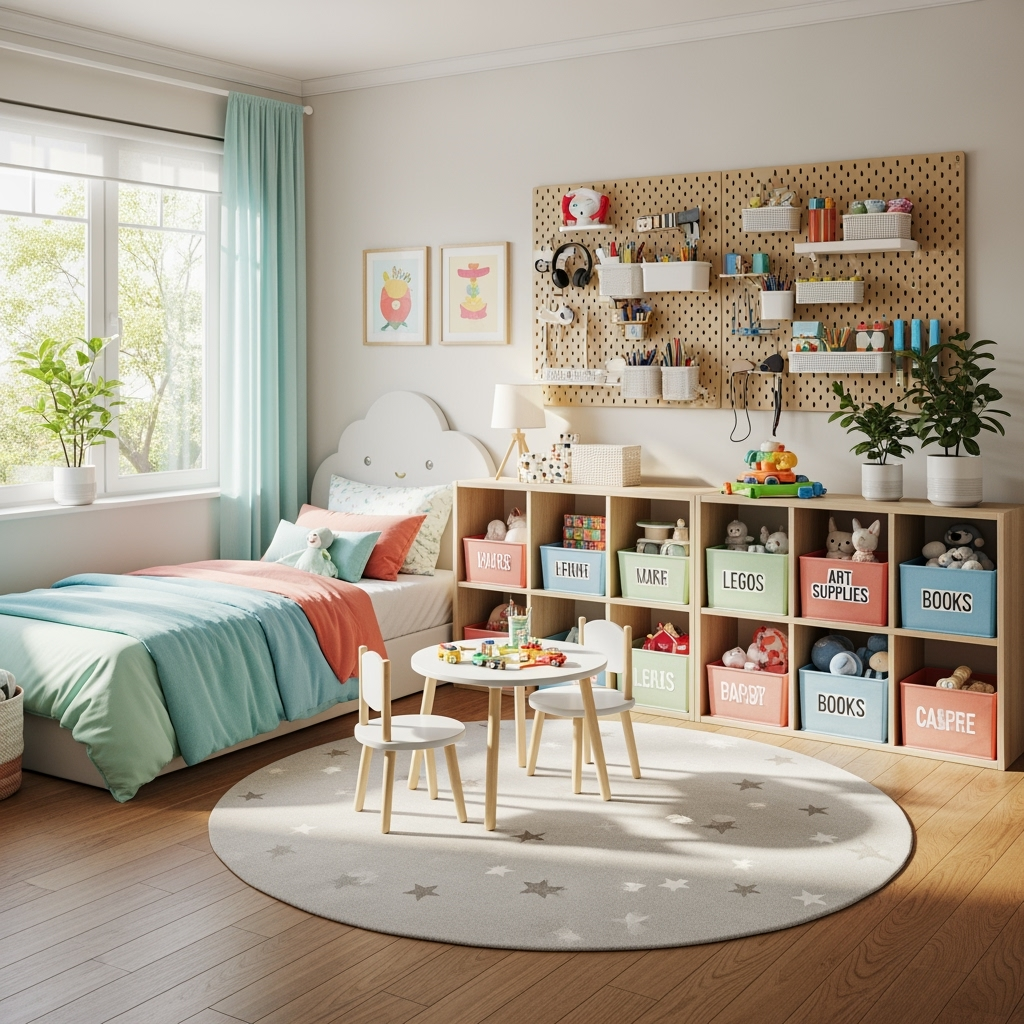Why Teaching Kids About Storage Matters
Decluttering children’s spaces isn’t just about creating a tidier home – it’s an opportunity to teach valuable life lessons about organization, decision-making, and letting go. As parents, we can transform what might seem like a daunting task into an enriching experience that helps our children develop essential life skills while maintaining a clutter-free environment.

Creating a Kid-Friendly Organization System
The key to successful children’s storage is making it both accessible and maintainable for young ones. Here’s how to create an effective system:
- Use clear, labeled containers at children’s height
- Implement color-coding for different categories
- Create designated zones for different activities
- Install child-friendly storage solutions that promote independence
Making Decluttering Fun and Educational
Transform the organization process into an engaging activity that children will want to participate in:
- Turn sorting into a game with timer challenges
- Create a “treasure hunt” for items to organize
- Use reward systems for maintaining organized spaces
- Make decisions together about what to keep, store, or donate
Smart Storage Solutions for Different Age Groups
Tailor your storage approach based on your child’s age and developmental stage:
Toddlers (Ages 2-4)
- Picture labels for toy bins
- Low-level storage for easy access
- Simple sorting categories
School Age (Ages 5-12)
- Homework and craft supply organization
- Rotating seasonal toy storage
- Personal space management skills
Preserving Special Memories While Decluttering
Help children learn to distinguish between everyday items and special keepsakes:
- Create a dedicated “memory box” for precious items
- Take photos of art projects before letting go
- Establish criteria for what makes something “special”
- Rotate displayed items seasonally
Teaching Long-Term Organization Skills
Build habits that will serve children throughout their lives:
- Establish daily clean-up routines
- Practice the “one in, one out” rule
- Regular maintenance checks
- Seasonal organization reviews
Using Self-Storage for Rotating Toys and Seasonal Items
Maximize space and maintain organization with strategic storage unit use:
- Store out-of-season clothing and equipment
- Rotate toys to maintain novelty and prevent overwhelm
- Preserve outgrown items for younger siblings
- Create an organized system for accessing stored items
Making the Transition to Long-Term Storage
Guide children through the process of deciding what to store long-term:
- Choose climate-controlled units for delicate items
- Properly prepare items for storage
- Create an inventory system
- Schedule regular visits to assess stored items
Dealing with Emotional Attachments
Help children process emotions around letting go of belongings:
- Acknowledge feelings about parting with items
- Discuss the benefits of donating to others
- Create positive associations with organizing
- Celebrate successful decluttering
Maintaining Organization Long-Term
Set up systems for ongoing success:
- Regular decluttering schedules
- Storage unit organization reviews
- Family organization meetings
- Positive reinforcement for maintaining order
Conclusion
Teaching children about organization through storage isn’t just about maintaining a tidy space – it’s about instilling valuable life skills that will serve them well into adulthood. By making the process engaging, educational, and emotionally sensitive, we can help our children develop healthy relationships with their belongings while learning practical organization skills.










Leave a Reply